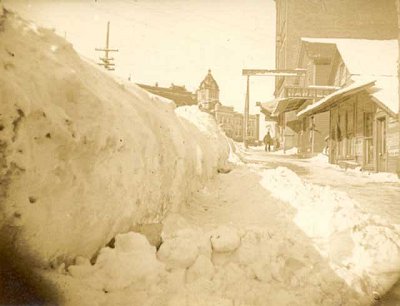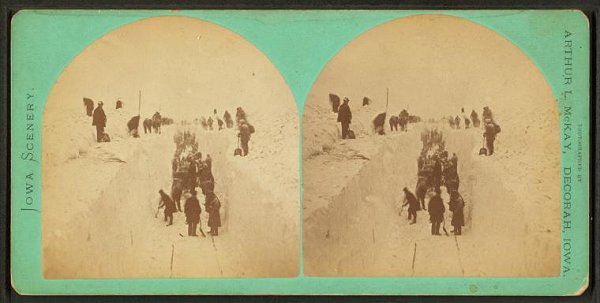Snow-bound. The blizzard struck very quickly with heavy snow, ferocious winds, and rapidly falling temperatures on what started out as a balmy day.
Source of image: Harper's Weekly, February 15, 1873
Summary:
The January 14, 1873 edition of the St. Paul Press reported that “sleighs were overturned and men prostrated as though they were nothing more than straws in the path of the gale.” An account from Litchfield, Minnesota stated:
About noon [January 7] the rain changed to snow, but the air was still warm and damp with the wind in the south. About 3 o’clock the wind changed to the north. In less than twenty minutes it changed from warm Spring weather to the worst wintry storm we ever witnessed. The wind blew a perfect hurricane, and the snow filled the air so that a person could not see more than twenty feet (Source of news accounts: “The Great Storm,” The New York Times, January 19, 1873).
One of the severest storms that has been known in this section for years, came swooping down on the city and adjacent country yesterday afternoon [January 7], about 4 o’clock. The wind blew a regular hurricane, and the air was filled with fine snow that blinded travelers and almost shut out eye sight… Trains were stalled and roofs were blown from one or two small houses on Capitol Hill.
Clearing the track, showing "cut" through the drift, 12 to 15 feet deep (Decorah, Iowa)--Publisher: A. L. McKay
Source: New York Public Library


